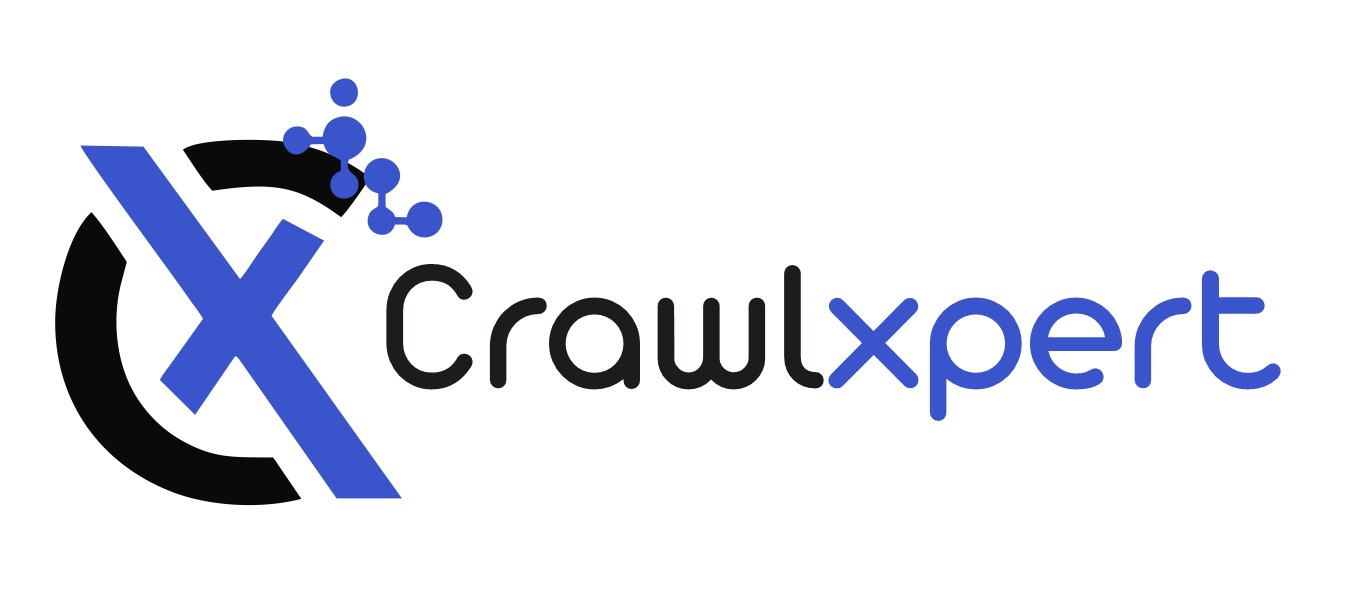
Web Scraping Walmart: Extracting Inventory and Sales Insights
May 01, 2025
Introduction
Admittedly, power is within data's confinement, especially in this present age of digital commerce. Brands, marketers, analysts, and advanced shoppers would all want continuous news or the very latest updates on inventory levels, sales performance, and pricing trends, especially in retail giants like Walmart. Web Scraping Walmart has become a very useful methodology of creating actionable business intelligence because the online store houses millions of products supplied by thousands of suppliers from its enormous global footprint.
Understanding the Web Scraping APIs
In this article, you'll find all the amazing ways of extracting Walmart inventory data and scraping Walmart sales insights,as well as effective tools and ethical considerations regarding the practice, and real-world applications for using this technique. Regardless of being a data lover, e-commerce entrepreneur, or competitive intelligence professional, this great guide will brighten your path toward understanding how Web Scraping Walmart inventory data works.
Why Scrape Walmart?
Before discussing the “how,” an explanation of the “why” is in order. Walmart has one of the largest and most complicated retail ecosystems in the world, covering everything from grocery supplies to electronics, apparel, and automotive supplies.
Here’s why Walmart is a goldmine of data:
1.Dynamic Pricing:
Walmart frequently updates its prices to stay competitive. Tracking these changes gives businesses a competitive edge.
2. Inventory Monitoring
Understanding stock levels across regions helps brands optimize supply chains.
3. Sales Trends:
By analyzing pricing and availability over time, you can deduce sales performance.
4. Product Launches & Discontinuations:
Stay ahead of the curve by identifying when new items are introduced or discontinued.
5. Competitor Benchmarking:
Monitor your competitors' products listed on Walmart to shape your own strategies.
Understanding the Basics of Web Scraping
At its core, Web Scraping Walmart means programmatically extracting data from Walmart's public-facing website. Unlike manually copying data, web scraping automates the process, pulling large volumes of data quickly and efficiently.
The process typically involves:
- ● Sending HTTP requests to Walmart pages
- ● Parsing the HTML responses to locate and extract data.
- ● Storing the extracted data in databases or spreadsheets for analysis.
Benefits of AI and ML in Web Scraping APIs
Common data points include:
- ● Product names
- ● Prices
- ● Stock availability
- ● Ratings and reviews
- ● Shipping information
- ● Category hierarchies
Tools such as Python libraries (BeautifulSoup, Scrapy), browser automation tools (Selenium), or headless browsers (Puppeteer) are widely used in this domain.
Extracting Walmart Inventory Data: A Closer Look
What is Inventory Data?
Inventory data refers to the available stock levels of products listed on Walmart’s platform. Monitoring inventory levels can reveal:
- ● Product demand patterns
- ● Stock-out situations
- ● Overstock scenarios
- ● Seasonal fluctuations
How to Scrape Walmart Inventory Data
Step 1: Identify Product URLs
First, you need a list of Walmart product URLs. These can be gathered by scraping category pages, search results, or using Walmart’s sitemap (if accessible).
Step 2: Inspect the Web Page Structure
Use browser developer tools to inspect the product page. Walmart usually displays inventory status like:
- ● “In Stock”
- ● “Out of Stock
- ● “Only X left!”
These cues are often embedded in specific HTML tags or within dynamically loaded JSON embedded in scripts.
Step 3: Extract Inventory Data
Here’s a basic Python snippet using BeautifulSoup:
python
CopyEdit
import requests
from bs4 import BeautifulSoup
url = 'https://www.walmart.com/ip/your-product-id'
headers = {'User-Agent': 'Mozilla/5.0'}
response = requests.get(url, headers=headers)
soup = BeautifulSoup(response.text, 'html.parser')
inventory_status = soup.find('div', {'class': 'prod-ProductOffer-oosMsg'}).text.strip()
print(inventory_status)
Note: Walmart uses dynamic content loading. You might need Selenium to fully render JavaScript-heavy pages.
Step 4: Automate and Scale
Once you have a working script, scale it to hundreds or thousands of products. Respect Walmart’s terms of service and implement polite scraping practices:
- ● Use proxy rotation
- ● Add delays between requests
- ● Handle errors gracefully
Insights You Can Derive
- ● Regional Stock Levels: Cross-reference inventory status by changing ZIP codes.
- ● Stock Movements: Track over time to detect restocks or shortages.
- ● Supplier Performance: Detect patterns in stock availability by supplier or brand.
Scrape Walmart Sales Insights: Unlocking Patterns
Sales insights go beyond just pricing and availability. By scraping Walmart sales insights, you’re aiming to infer:
- ● Sales velocity
- ● Pricing strategies
- ● Promotional impacts
- ● Consumer preferences
Step 1: Monitor Price Changes
Frequent price drops followed by "out of stock" status can signal high sales velocity. Track price changes over time to build a price history.
python
CopyEdit
price = soup.find('span', {'class': 'price-characteristic'}).get('content')
Step 2: Analyze Ratings and Reviews
Products with increasing reviews and ratings are likely top sellers. Scrape timestamps of reviews to map review velocity.
Step 3: Track "Best Seller" and "Popular Pick" Badges
Walmart often marks hot-selling products with badges. These are reliable indicators of high sales performance.
Step 4: Monitor Inventory Depletion
A rapid decrease in stock across multiple regions often signals a spike in sales.
Step 5: Utilize Historical Tracking
Record inventory levels and prices over days, weeks, or months to predict sales cycles and promotional windows.
Step 6: Advanced Data Enrichment
Enhance your scraped data with external sources:
- ● Social media mentions
- ● Advertising campaigns
- ● Seasonal demand forecasts
Challenges in Web Scraping Walmart
While Web Scraping Walmart is a powerful approach, it comes with its challenges:
1. Dynamic Content:
Walmart heavily uses JavaScript for rendering product details. Tools like Selenium or Puppeteer are essential for accurate scraping.
2. Anti-Scraping Measures:
Rate limiting, CAPTCHA challenges, and IP bans are common. Use ethical scraping tactics to mitigate risks.
3. Data Structure Variability:
Walmart constantly updates its website design. Regularly update your scrapers to adapt to changes.
4. Legal Considerations:
Always review Walmart’s terms of service and consult legal guidance. Ethical data scraping focuses on publicly accessible data and respects fair use.
Ethical Considerations: Responsible Web Scraping
When it comes to Web Scraping Walmart inventory data, ethics and legality must be at the forefront of your strategy.
● Respect Robots.txt:
Check Walmart’s robots.txt file to understand which parts of the site are disallowed for automated access.
● Avoid Server Overload:
Implement throttling and delay mechanisms to avoid overwhelming Walmart’s servers.
● Use Proxies and User Agents:
Rotate IP addresses and use realistic user-agent headers to mimic human browsing behavior.
● Data Usage:
Use scraped data responsibly. Avoid using it for malicious activities or data resale.
Real-World Applications
E-commerce Competitor Analysis
Brands selling on Walmart can benchmark their products against competitors
- ● Pricing strategies
- ● Stock levels
- ● Promotions and discounts
Dynamic Pricing Models
Use Walmart’s pricing patterns to dynamically adjust your own prices across multiple platforms.
Inventory Forecasting
By continuously extracting Walmart inventory data, brands can predict demand fluctuations and optimize supply chains accordingly.
Marketplace Research
Entrepreneurs looking to enter Walmart Marketplace can use sales insights to identify high-demand, low-competition niches.
Ad Spend Optimization
Link sales velocity with advertising spend to measure ROI on Walmart-sponsored ads.
Tools & Technologies for Walmart Web Scraping
Let’s explore the best tools for Web Scraping Walmart data efficiently.
Python Libraries
● Requests:
For sending HTTP requests.
● BeautifulSoup:
For parsing HTML.
● Selenium:
For handling dynamic content and automation.
● Scrapy:
A robust scraping framework with built-in throttling and proxies.
Headless Browsers
● Puppeteer (Node.js):
Excellent for scraping modern JavaScript-heavy websites.
● Playwright:
Supports multiple browsers and is fast and reliable
Proxy Services
- ● Bright Data
- ● Oxylabs
- ● ScraperAPI
Data Storage & Visualization
- ● Pandas and SQL databases for storing data.
- ● Power BI, Tableau, or Google Data Studio for visualizing insights.
Automating & Scaling Your Scraping Projects
When scaling your Web Scraping Walmart efforts, consider:
● Task Scheduling:
Use cron jobs or cloud functions.
● Distributed Scraping:
Deploy your scraper on cloud platforms like AWS Lambda, Google Cloud Functions, or Azure Functions.
● Data Pipelines:
Automate data cleaning, transformation, and loading (ETL) processes.
● Dashboarding:
Build real-time dashboards to monitor inventory and sales trends.
The Future of Data Extraction from Walmart
With advancements in AI and machine learning, the future of extracting Walmart inventory data and scraping Walmart sales insights looks even more promising.
● Predictive Analytics:
Predict out-of-stock scenarios before they happen.
● Sentiment Analysis:
Combine scraped reviews with AI to understand consumer sentiment.
● Automated Alerts:
Receive real-time notifications for inventory or price changes.
● AI-Powered Scrapers:
Use natural language processing to adapt to page structure changes.
Conclusion
Through Walmart web scraping, users are offered vast opportunities to gain critical insights into inventory and sales, effectively allowing firms to use data to base their decisions. Discovering various patterns, predicting trends, and formulating better strategies presents unlimited possibilities from scraping Walmart on inventory data to sales insights.
With great power comes responsibility. Therefore, it is paramount to respect some ethics, respect Walmart's digital boundaries, and use the extracted data to create goodwill for both the company and its customers.
Adopting the techniques, tools, and best practices discussed in this guide will make someone well acquainted with scraping Walmart inventory data and perfectly capable of using raw information to win a strategic edge.
Get In Touch with Us
We’d love to hear from you! Whether you have questions, need a quote, or want to discuss how our data solutions can benefit your business, our team is here to help.

